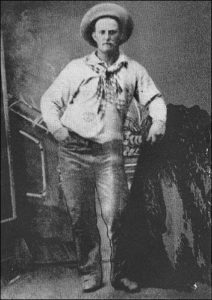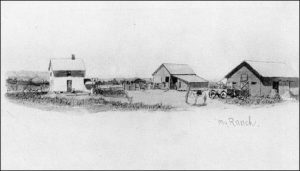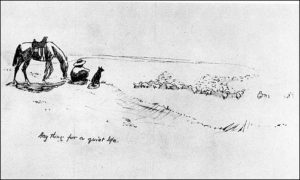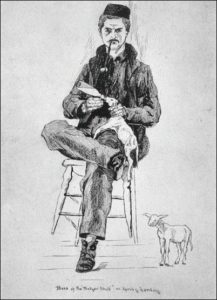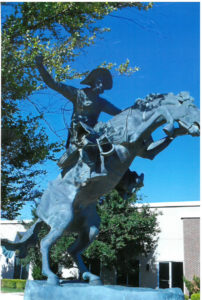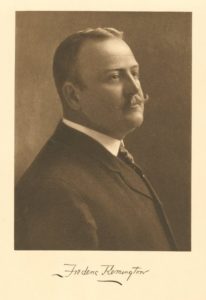They called Frederic Remington a lot of things — fun-loving, lazy, football player, boxer and above all an artist. And for two years, they also called him a Kansan.
Remington was born in Canton, N.Y., in 1861, and for his first four years his dad was away. The senior Remington was a Civil War Union army colonel who wanted his son to attend West Point and to pursue a military career. But a couple of things seemed to stand in the boy’s way: discipline and math. Thus, he settled for Yale, where he lasted just one year. He did manage to play for the school’s national champion football team alongside the legendary Walter Camp (who’s credited with modernizing the game) and to take up boxing.
Then, like many other eastern young men, including eventual friend Theodore Roosevelt, he yielded to the lure of the west. In 1883, armed with a $10,000 inheritance (worth more than $300,000 now), he had a Yale classmate, Robert Camp, buy a 160-acre Butler County sheep ranch for him. He moved to Kansas.
The ranch was about three miles from the town of Plum Grove, at its biggest a tiny town. Various estimates put its population at 60 to 100. Ten miles north was Peabody, a comparatively robust town of 1,400 people. It was there Remington did most of his business, some of his mischief and one of his good deeds. Early newspaper accounts say he rode into town, saw a bully threatening another man and used his Yale-honed boxing skills to send the bully running.
Sheep farming could be profitable. A sheep purchased in New Mexico for $1 could be raised to maturity and sold for $5. In addition, there was valuable wool to shear. Unfortunately for a would-be gentleman rancher, the animals also stank.
To do the work, Remington hired two local men, Bill Kehr and Grandon Scrivener. They became not only employees but friends who joined in Remington’s hijinks.
In one incident at Plum Grove, they were credited with putting the preacher’s buggy atop the church and a cow inside the building. Remington reportedly paid $10 to have the buggy lowered and the building cleaned.
More seriously, at a community Christmas party, they ignited a box of excelsior, yelled “fire” and emptied the church where the party was being held. For that they stood trial but the jury was hung. A second trial was never held because Remington sold his holdings and left the state after paying court costs.
While Fred had taken an art class at Yale, he was just beginning to use his talent. He often drew local scenes while in Kansas on whatever paper was handy and gave the works to friends, who were appreciative. But it wasn’t until after selling his property and moving to Kansas City that he began to be serious about his art. After a short time there in which his business ventures did not flourish, he returned to New York and started his career as a western artist.
And what a career it became. Over his lifetime, he completed some 2,800 paintings and 19 bronzes while also writing books and covering the Spanish-American War as a correspondent. He became regarded as one of the best — if not the best — portrayers of the American West, focusing on cowboys, cavalrymen and Native Americans.
He is remembered to some extent in Kansas. The towns of Elbing, Furley, Potwin and Whitewater jointly hold a Frederick Remington Festival — also know as “Fred Fest” — each October. Remington Road is a county road a few miles east of Peabody. Remington School Distarict USD 206 operates an elementary school, middle school and high school in Butler County. Remington Place is an upper-income enclave in east Wichita and one of its streets is named Frederic. The town of Plum Grove is entirely gone except for a cemetery.
In El Dorado, the Coutts Museum of Art owns 21 recasts of Remington’s works and rotates displays of some of them.
The Museum of World Treasures in Wichita has a collection of bronzes based on Remington’s work. And the Wichita Art Museum has a bronze of one of Remington’s best-known works, “The Bronco Buster.” However, it is not currently on display.
Remington lived only 48 years. He died after a severe attack of appendicitis the day after Christmas in 1909. His widow destroyed molds of the bronzes so that no more re-casts could be made, increasing the value of those that then existed.
Contact Bob Rives at bprives@gmail.com.
